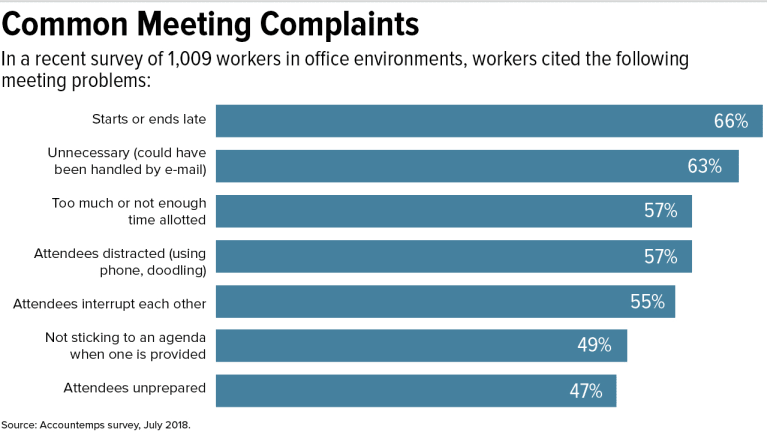Don't Mistake Perks for Corporate Culture
Are you mistaking great employee perks for great corporate culture? Too often, companies confuse employee perks with corporate culture. Continue reading to learn how to differentiate the two.
Too often, companies confuse perks and culture. Leaders think that to create a great culture, they should go purchase ping-pong and pool tables, get a keg for the office, or offer four-day workweeks. But these are all perks, not culture, which are two very different things. If a company only focuses on adding flashy perks, they may attract an employee, but they won’t retain them.
Don’t get me wrong, perks are great, but if there are beanbag chairs and no one likes each other, that doesn’t accomplish much. Allowing your employees to bring dogs to work is a perk. Texting an employee after they had to put their dog down is culture.
Culture is made up of emotion and experiences. It’s the intangible feelings created by tangible actions. It’s about caring for your people and creating a sense of community that allows employees to feel connected to something bigger than their individual role. It’s allowing them to feel comfortable to be themselves. Culture is creating an experience that employees wouldn’t otherwise be able to have. It’s spending the time to actually listen and support them in their personal lives, both good and bad. It’s about asking for their opinion and then acting on the feedback.
Perks are short-term happiness. They will attract talent, but if companies aren’t investing in professional and personal development, if they’re not willing to spend the time listening and gauging individual motivators, if there is a lack of empathy for an employee who is struggling with a personal issue, the employee will leave as soon as they are offered a higher paycheck elsewhere. It’s like a relationship: If all you get are flashy gifts from your significant other without any emotional investment or support, it will fizzle.
Culture is transparency, and that is a two-way-street. If leaders expect their staff to be transparent, they too have to be transparent with their staff. They stand up in front of their co-workers and share their mistakes that have cost money, damaged confidence and produced tears and heartache. They share mistakes to show employees, new and old, that if you are running 100 mph, mistakes will happen, but the future success will overshadow them. That you can learn from them.
What about the companies that have their core values of integrity and honesty painted on their walls, but when influential employees go against them, they’re not penalized? That’s fake. Culture is when leadership removes someone from the organization who is bringing others down regardless of them being the company’s top producer. They are dismissed because that is the right thing to do for the team.
Culture is holding people accountable. Pushing them to be better. Training them to learn how. Developing their skills and then allowing them to execute the directives. When people are challenged and pushed and they become better, you are establishing culture.
Building a culture is hard work. It’s not a one-month or one-year initiative. The truly great places to work—the ones that get all the recognition and accolades—didn’t start investing in employees for the awards. The awards were ancillary.
An employee who thinks of jumping ship can compare perks easily, but culture is much harder to evaluate. Instead of focusing on temporary benefits, leaders should focus on creating an environment which makes your company hard to leave.
SOURCE: Gimbel, T. (14 November 2018) "Don't Mistake Perks for Corporate Culture" (Web Blog Post). Retrieved from https://blog.shrm.org/blog/dont-mistake-perks-for-corporate-culture
Originally posted on LaSalle blog.
Creating Better Employee Benefits With Advanced Analytics
It is important to provide a workplace, employee benefits and payment system that keep your employees happy. Read this blog post to learn how you can create better employee benefits with advanced analytics.
Job satisfaction is the most important part of maintaining a happy workforce. If you have a workforce that feels like they could get a better deal elsewhere then they are likely to leave.
It is therefore important to provide a working environment, benefits and payment system, that keeps your employees happy without breaking the bank.
Analytics are being used to make sure that this is being done effectively, seeing where discontent is occurring and helping to suggest how this can be solved.
For instance, there are research companies that can use text analysis tools to analyze hundreds, if not thousands of survey entries that can give a holistic view of employee benefits. Often when survey results are being analyzed by an individual, it is difficult to gauge the overall feeling and there can be bias put on the results.
It also allows for HR to note the frequency of meetings with individuals as well as the frequency and size of any pay rises. If it is flagged that somebody hasn’t had a meeting with HR where they can directly communicate any concerns for a considerable amount of time, then tho scan be rectified.
Analytics can also be used to investigate which teams are happiest, have the highest retention rates or are the most profitable. This then allows companies to investigate in detail what is making these teams happiest or most productive, then create benefit packages to create similar results for other teams in the company.
Analytics and data have allowed companies to collect data to make their workforces happier and more content. This, in turn, creates situations where employees are eager to work and appreciative of the benefits they receive, improving ROI and increasing productivity.
SOURCE: Pannaman, E. (12 October 2018) "Creating Better Employee Benefits With Advanced Analytics" (Web Blog Post). Retrieved from https://channels.theinnovationenterprise.com/articles/202-creating-better-employee-benefits-with-advanced-analytics
7 Steps to Running Better Meetings
A recent Accountemps survey revealed that office workers spend 21 percent of their time in meetings and feel that 25 percent of it is wasted. Read this blog post for seven steps to running better meetings.
We love to hate meetings. We groan about how annoying they are. We crack jokes about how much time gets wasted, about bureaucracy run amok.
But it’s not really a laughing matter.
Poorly run meetings can sap the lifeblood out of an organization. Not only are they mentally draining, but they can leave staff disengaged and demoralized, experts say.
On average, office workers spend 21 percent of their time in meetings and feel 25 percent of it is wasted, according to the results of a recent survey of 1,000 employees by Accountemps. One of the top complaints was that meetings are called to relay information that could have been communicated via e-mail.
Managers are also dissatisfied. In a Harvard Business School study last year, researchers found that 71 percent of the 182 senior managers interviewed said meetings were unproductive and inefficient, and 65 percent said meetings kept them from completing their work.
Fortunately, leaders can help improve how meetings are run. Indeed, their behavior is critical to achieving better results and a more positive outlook and engagement from employees, according to a 2017 study published in the Journal of Leadership & Organizational Studies. In an earlier University of North Carolina study, researchers found a link between how workers feel about the effectiveness of meetings and their job satisfaction.
Other studies have found that dysfunctional communication in team meetings can have a negative impact on team productivity and the organization’s success.
What happens in these gatherings is a reflection of the workplace culture, experts say.
“It gets down to identity and performance,” says J. Elise Keith, co-founder of Lucid Meetings in Portland, Ore., and author of Where the Action Is (Second Rise, 2018). “The way in which an organization runs its meetings determines how it views itself.”
“Bad meetings are almost always a symptom of deeper issues,” Keith notes in her book.
Unfortunately, many business leaders don’t receive adequate training on how to manage or facilitate meetings, she says. “I believe that a lot of leaders have bought into the idea that poor meetings are inevitable.”
Here are 7 steps to making the time employees spend together more meaningful:
1. Prepare. Are you clear on the meeting’s purpose? What is your desired outcome? How will you achieve that?
More prep time is typically devoted to senior-level meetings compared to those held for individuals in lower-level positions, says Paul Axtell, a corporate trainer and author of Meetings Matter (Jackson Creek, 2015). He says that executive get-togethers are more effective “because people take them seriously.”
2. Limit the number of participants. The most productive meetings have fewer than eight participants, Axtell says. A larger group will leave some disengaged or resentful that their time is being wasted.
3. Send an agenda and background material in advance. If you want a thoughtful discussion, give your team members time to think about the problem or proposal that the meeting will focus on, he says.
4. Start and end on time. Don’t punish people for being punctual by waiting on late stragglers to get started. At the same time, it’s best not to jump right to the heart of the discussion in the first few minutes, Keith says. Provide a soft transition that will help those coming from other meetings to refocus.
5. Make sure all attendees can participate. One common complaint about meetings is that a few people tend to dominate the conversation. Call on other individuals to share what they think, Axtell says. Who is most likely to hold a different view? Who will be most affected by the outcome? Who has institutional knowledge that might be useful? Think about who to draw out on specific topics as you prepare. You’ll collect more ideas and leave participants with a more positive experience.
To feel good about work, people need to feel included and valued. “That means you have a voice and are allowed to express your opinions,” Axtell says.
Because you’re a leader, your views already hold more weight. If you share them too early, you may discourage others from presenting alternate perspectives. Focus on listening, and stay out of the discussion as long as you can, he says. You might learn something.
Avoid PowerPoint slides or other technology if it’s not required for an agenda item. They tend to shut down dialogue, Axtell says.
A surefire way for leaders to alienate participants is to use up most of the meeting time presenting a proposal and leave only a few minutes for questions and comments, Keith says. When people do speak up, thank them for their contributions. And use their ideas, she says.
6. Keep a written record. Posting the meeting agenda and taking notes that everyone can access will help keep participants on track. Unfortunately, many organizations fail to do so, Keith says. The written record ensures that faulty memories or differing interpretations don’t lead people down the wrong path. Are the notes detailed enough to allow you to tackle the action items days later? Are the deadlines reasonable? Be realistic. It doesn’t help the team to accept a giant list of action items that it likely can’t complete, she says.
7. Follow up. What percentage of the action items get completed by the deadlines? If you don’t achieve 85 percent, participants’ sense of effectiveness breaks down and they may disengage, Axtell says. Most groups complete just 50 percent to 60 percent.
“Whether you pay attention to them or not, meetings are in fact where your teams and your people are learning how they should behave and what they should be doing,” Keith says. “So identify the specific types of meetings your organization needs to run. Find great examples of how to run those meetings. You shouldn’t have to invent it. And set up a system that people can use successfully to become the organization that you want to become.”
SOURCE: Meinert, D. (30 October 2018). "7 Steps to Running Better Meetings" (Web Blog Post). Retrieved from https://www.shrm.org/hr-today/news/hr-magazine/1118/pages/7-steps-to-running-better-meetings.aspx/
8 scary benefits behaviors employees should avoid
Nothing is more scary to benefits professionals than employees failing to review their open enrollment materials. Continue reading for eight of the scariest benefit mistakes and tips on how you can correct them.
Halloween is already frightening enough, but what really scares benefits professionals are the ways employees can mishandle their benefits. Here are eight of the biggest mistakes, with tips on correcting them.
Participants don’t review any annual enrollment materials
Why it’s scary: Employees are making or not making decisions based on little or no knowledge.
Potential actions: Employers can implement a strategic communications campaign to educate and engage employees in the media and format appropriate for that employee class, or consider engaging an enrollment counselor to work with participants in a more personalized manner.
Employees don’t enroll in the 401(k) or don’t know what investment options to choose
Why it’s scary: U.S. employees are responsible for much of their own retirement planning and often leave money on the table if there is an employer match.
Potential actions: Employers can offer auto-enrollment up to the matching amount/percent; consider partnering with a financial wellness partner, and provide regular and ongoing communications of the 401(k)’s benefits to all employees.
Employees don’t engage in the wellness program
Why it’s scary: The employee is potentially missing out on the financial and personal benefits of participating in a well-being program.
Potential actions: Employers need to continuously communicate the wellness program throughout the year through various media, including home media. Employers also should ensure the program is meeting the needs of the employees and their families.
Employees don’t update ineligible dependents on the plan
Why it’s scary: Due to ambiguity where the liability would reside, either the employee or the plan could have unexpected liability.
Potential action: Employers can require ongoing documentation of dependents and periodically conduct a dependent audit.
Employees don’t review their beneficiary information regularly
Why it’s scary: Life insurance policy proceeds may not be awarded according to the employee’s wishes.
Potential action: Employers can require beneficiary confirmation or updates during open enrollment.
Employees do not evaluate the options for disability — whether to elect a higher benefit or have the benefit paid post-tax
Why it’s scary: Disability, especially a short-term episode, is very common during one’s working life; maximizing the benefit costs very little in terms of pay deductions, but can reap significant value when someone is unable to work.
Potential action: Employers can provide webinars/educational sessions on non-medical benefits to address those needs.
Employees do not take the opportunity to contribute to the health savings account
Why it’s scary: The HSA offers triple tax benefits for long-term financial security, while providing a safety net for near-term medical expenses.
Potential actions: Employers can select the most administratively simple process to enroll participants in the HSA and allow for longer enrollment periods for this coverage.
Employees do not use all of their vacation time
Why it’s scary: Vacation allows an employee an opportunity to recharge for the job.
Potential actions: Employers can encourage employees to use their vacation and suggest when the workload might be more accommodating to time off for those employees who worry about workloads.
SOURCE: Gill, S. & Manning-Hughes, R. (31 October 2018) "8 Scary Benefits Behaviors Employees Should Avoid" (Web Blog Post). Retrieved from https://www.benefitnews.com/slideshow/8-scary-benefits-behaviors-employees-have?brief=00000152-14a5-d1cc-a5fa-7cff48fe0001
8 Benefits Of Measuring Employee Engagement
Are you measuring your company’s employee engagement? Measuring employee engagement helps companies attain real results and solve problems before they get worse. Read on to learn about the eight benefits of measuring employee engagement.
Employment engagement matters to achieving company success and developing employee skills and talents toward future goals. Happy employees equal a happy and prominent company. However, outdated traditional surveys used to measure engagement fail to reflect how modern employees operate and what they most desire and need to succeed.
Measuring employment engagement in real-time helps companies achieve real results, just as the importance of measuring finances and sales regularly do. Here are eight benefits of measuring employee engagement — much like taking your company's work culture temperature.
1. Solve Problems Before They Worsen
When you have a deadline, what can you do with issues that only now reveal their consequences? You have to deal with the issue quickly, and that often means putting a tourniquet on the problem and moving on. When you keep checking the temperature, you address issues — and their roots — before escalation occurs.
Problems only get big when you let them. Don't wonder why your employee retention and sales suddenly plummet.
2. Employ Empathy and Build Trust
Both employees and leaders need ongoing feedback to keep growing and improving. Make feedback a two-way process and communication that also stems naturally out of conversation and connection. Ongoing, open feedback allows leaders to pose better questions — especially those that relate to the company mission and vision.
When leaders ask good questions and connect, they build trust among employees and workflow improves as a result.
You may think your human resources department handles the human side of things, and that's that. However, thinking that way leaves your company out in the cold. It creates a negative communication gap between leader and employee, leading to #1 and risking you losing a talented individual.
Employ empathy and get the whole story when you see a struggling employee, whether their obstacle is personal or work-related. Everyone is human.
3. Make Morale #1
When employees disconnect, engage them in a meaningful conversation. It doesn't have to last the whole lunch hour — even a brief chat to check in will show you care. You’ll learn more about your employee's concerns, as well as their promise for the organization.
Make morale a top priority in your company, and you will reap the rewards. Productivity increases and you retain employees longer when their morale moves upward.
4. Share Insights Transparently
Back to those metrics. Use the analytics reports regarding workforce trends and finances to motivate your mission and, thus, your employees. Your employees need to be an active part of positive change-making. Employees feel more involved and valued when they know how and why they contribute to an organization and seeing the results drives them to push even harder.
5. Opportunity for Improvement
Surveys provide a snapshot of employee activity and thinking in a single moment in time as they struggle to think up thorough answers and complete the questionnaire to get back to work — or select variations of seven to nine on a 10-point scale to get it done. What does that measure exactly?
Snapshot surveys provide results that develop game plans months down the road. You can also measure social activities and interconnectivity at work to increase the ability to find meaning at work.
Encourage employees to keep track of their thoughts and feelings weekly and speak up. Better measurement tools — especially employee-preferred ones — increase opportunities for improvement and engagement.
6. Take Action When it Matters
Leaders can take action in small, cost-effective ways to engage their employees and improve morale, such as through conversation and opportunities to balance work and life.
Around 99 percent of meetings waste time, so take action as needed. Allow employees to think aloud in conferences and even be a little late, but start the session. When you have a strong work culture, employees and leaders collaborate and co-create to produce real-time, meaningful results.
7. Look for Trends
Technology allows employers to spot trends and take immediate action when used correctly. Does your website measure user experience for the customer? What about your employee's "user experience?"
When you identify trends, you can impact engagement in the day-to-day doldrums of routine. You make work meaningful and help the entire staff take responsibility for trends, as well as their engagements levels. Platforms like Slack allow employees to develop activity-based work styles that boost satisfaction scores, and engagement doesn't always equal productivity. So, deepen your definition of engagement.
8. Keep the Positive Flow Going
What chain reaction would you rather have — a negative one where issues worsen due to disengagement or a positive one where employees feel engaged and value their performance beyond getting a paycheck? Monitor your initiatives for employee engagement regularly, and keep what works going to maintain the positive flow.
Human resources don't begin and end in one department. Every department requires a human touch — your workers aren't drones or robots. They have real needs that, when met, can improve morale and lift up the company to success.
SOURCE: Craig, W. (18 September 2018) "8 Benefits Of Measuring Employee Engagement" (Web Blog Post). Retrieved from https://www.forbes.com/sites/williamcraig/2018/09/18/8-benefits-of-measuring-employee-engagement/#5b9bf20a7c55
How to Build a Motivated Workforce
Are your employees motivated? Getting an engaged workforce requires employers to focus on nurturing motivation. Read this blog post to learn how to nurture motivation in your workplace.
There’s a lot of buzz and conversation happening around the importance of employee engagement to a successful organization. But I believe that engagement is an overused or at least misused term. Engagement, to me, isn’t a process but rather an end-state where your employees are “all in.”
Engaged employees work hard on today’s priorities, and when they believe what they do matters and know that you’re invested in them, they will stay with your business for the long term and help you solve the challenges of tomorrow. But getting to this state of engagement requires focusing on nurturing motivation.
Simply put, motivated workers are more productive and efficient, and stretch themselves to do more. When employees are motivated, they get their work done faster and with greater levels of collaboration, creativity and commitment. A motivated workforce goes above and beyond to do what is in the best interest of the organization and, ultimately, the bottom line. So, what are ways you can truly motivate employees?
Set Clear Expectations and Goals, and Communicate Frequently
It’s a strange truth, but many employees simply don’t know what is expected of them at work. Workers are more motivated and engaged when they are given clear objectives, understand how they will be evaluated, and see how their efforts contribute to the bigger picture. Isn’t that what we all want anyway; to contribute to and be a part of something bigger than ourselves? When HR teams help create this clarity for our employees, they experience a greater “purposefulness” or “meaningfulness” which in turn contributes to motivation. So how do you ensure organizational alignment and foster this sense of meaningfulness?
One critical step that HR leaders can take is working with managers to increase the frequency of communication around performance and goals. When employees work with their managers to set goals and then check in on progress on an ongoing basis rather than treating them as ‘set and forget,’ it can help improve employee motivation, elevate performance and benefit organizations overall. By increasing the frequency of conversations between managers and employees around progress towards goals, HR teams can take a huge step towards creating an effective performance management program for today’s workforce.
This ongoing endeavor isn’t easy. There are time and commitment involved, and it only works when managers and employees are both invested in open and ongoing dialog about goals and expectations. But the more often managers talk to their employees, the more motivation and performance increases within the workforce. Even quick, informal check-ins, or “managing in the moment” to address priorities or give feedback boosts an employee’s sense that someone is invested in them, and drives motivation.
Spend Time Talking About Career Development
Motivation is tied to a future outlook. One critical way to boost motivation is to move away from ineffective, backward-looking annual performance reviews, and start coaching your managers around having more frequent conversations with their employees that focus on career development. By focusing on development, these conversations become more constructive, forward-looking, and connected to both personal and business objectives. Now you’ve motivated an employee because you’re actually talking about their future and showing you are invested in them!
Implementing performance management processes that are rooted in continuous conversations that center on coaching and career development is vastly more effective for motivating the modern workforce. Focusing on ”performance development” rather than “performance review” shifts the conversation around the process to a more forward-looking, positive and employee-focused stance. This can have a huge impact from an employee motivation perspective, rather than feeling like their managers are micromanaging them or questioning their work, workers feel invested in and motivated to get to the next level in their career, which translates to increases in employee performance.
Provide Timely and Relevant Feedback
Almost half of employees receive feedback from their managers only a few times a year or less. Not only do employees want clear expectations to be established, they also want to know how these are mapping to their larger career goals. Managers need to provide feedback in a timely manner to promote career development. Feedback can be tricky to deliver, and many don’t like delivering or receiving it. So managers need to normalize the feedback by making sure it is timely and is relevant to the employee and their work.
There are many approaches to delivering feedback, but delivering all feedback all the time isn’t the right answer. Managers need to be thoughtful about evaluating all the feedback they receive about their employees and select those items that are most relevant to the employee and those items that they are ready to hear, all in a timely manner to assist the employee in their career.
So, for many reasons, a quarterly review cadence, vs. an annual review, enables managers to align employees’ individual career goals with the organization’s top priorities, ensuring the employee has a sense of purpose and business goals are met.
This is what motivating your workforce is all about. There is no silver bullet to motivate your workforce, however, HR leaders and managers can make a big impact by having frequent and continuous conversations with employees that focus on career development, communicating clear expectations and providing timely feedback. It’s an ongoing process and won’t happen overnight, but by focusing on motivation, both employees and organization at large are better positioned for success.
SOURCE: Strohfus, D (27 August 2018) "How to Build a Motivated Workforce" (Web Blog Post). Retrieved from https://hrexecutive.com/how-to-build-a-motivated-workforce/
Shifting from employee engagement to employee experience
Employee experience is gaining steam and has many employers changing the way they view their employees. Read this blog post to find out more.
The way businesses view their employees has changed. From mere workers and resources, employers started adopting the mindset that they should give their employees benefits and values, instead of just extracting value from them. The concept of employee engagement applies to this. A lot of studies and researches came out on how employee engagement helps increase employee performance and profitability. Recently though, a shift is happening, with the term “employee experience” gaining steam.
What is Employee Experience?
So, what exactly is employee experience or EX? According to this article, employee experience is “just a way of considering what it’s actually like for someone to work at your company”. It is a holistic model. It includes what the employee experiences in the workplace and within teams—bringing together all the workplace, HR, and management practices that impact people on the job.
Why the shift?
Employee engagement tends to focus on the short-term. For example, there’s an upcoming engagement activity. Once the activity is done, what happens? Most likely, the employee returns to their work, the event just a memory until the next one.
The change in workforce demography creates new demands. The millennial generation, which currently dominates the workforce, have different priorities than the previous generations. The Generation Z’s are now also entering the workforce with a new set of expectations.
Making little changes that impact employee morale and motivation is important. Employee experience is more long-term and big-picture focused. Its scope, from an employee’s point of view, can be end-to-end—from recruitment to retirement.
The challenge of EX is immense. Fortunately, technology is on your side. Various HR tools have been developed to help you get the data that you need, as well as make it easier for you to design the programs you want. Deloitte lists down what you could do right now:
- Elevate employee experience and make it a priority
- Designate a senior leader or team to own it
- Embrace design thinking
- Consider experiences for the entire workforce
- Look outside
- Enlist C-suite and team leader support
- Consider the impact of geography; and
- Measure it
The best way to conquer the challenge of EX is by starting now!
SOURCE: Cabrera, A. (23 January 2018) "Shifting from employee engagement to employee experience" (Web Blog Post). Retrieved from https://peopledynamics.co/shifting-employee-experience/
One sure-fire way to engage employees in voluntary benefits
Do you want to increase employee engagement when it comes to voluntary benefits? Read on to learn how to increase employee engagement.
Whether your employees are 22 or 62, they need to plan for the unexpected. A sudden injury or illness can dramatically derail their financial well-being and retirement readiness. As the responsibility for healthcare costs shifts to employees, employers are taking steps to help their employees by offering voluntary benefits, like critical illness and accident insurance.
The hitch, however, is that many employees aren’t taking advantage of these benefits.
There are many reasons for this: Employees may not have much appetite for voluntary insurance benefits after choosing medical benefits. They may not understand what’s being offered or how it is relevant to their lives. Further, if they haven’t been close to someone who has dealt with a catastrophic health issue, they may not grasp how destabilizing that is and how voluntary benefits can help at a difficult time.
So how do employers keep employees from hitting the snooze button on voluntary insurance benefits, and wake them up to how these benefits can help with their overall financial wellbeing?
One way is to understand what employees might need given their life stage, family situation or other variables. To help employees sort this out, here are few scenarios of how voluntary benefits could help employees — with fictional people based on a combination of our experiences with customers.
Leaving nothing to chance
Scott tends to be a worrier. His friends joke that he’s a 45-year-old man in a 25-year-old body. He is in the “adulting” stage of life — getting settled in a career, figuring out his personal life, and living on a salary that’s just a few steps up from entry-level. Scott worries about what might happen if he gets sick or injured and can’t meet his portion of his high-deductible plan. He’s also open about the fact that he doesn’t want to move back in with his parents. Unlike most of his friends, he’s also thinking decades ahead and is already contributing to a 401(k).
Scott wants it all — financial protection now and for the future. Based on what he’s seen happen to friends and colleagues close to his age, he chose critical care and accident insurance coverage during benefits enrollment at work. These options will help cover unexpected costs if an unexpected covered event does happen, and the cost won’t take a big chunk out of his paycheck thanks to his employer’s group rate. What’s more, the benefit is tax-free if he ever needs to use it, and can help keep him independent, and out of his parents’ house.
For employers, these kinds of benefits can help mitigate employees’ financial stressors so they can focus on wellness and getting back to work if an unexpected health issue strikes.
Weekend warriors and thrill-seeking hobbies
Catherine is a marketing manager who is married with two children. She is 44 and in the “balancing” stage of life, between “adulting” and “planning.” Her main concern when looking at voluntary insurance benefits was her husband, who likes high-thrill, risky sports. While Catherine tends to shy away from motorcycles and extreme sports, she is a bit of a weekend warrior since it’s hard to find time to exercise during the week. Her kids are also active and perpetually on the go, whether playing sports or just running around with the neighborhood kids.
Once Catherine learned about voluntary benefits, it was a no-brainer to choose accident insurance for her entire family. While she hopes that her family will only have fun — and avoid injury — doing what they all enjoy, she knows they have to be prepared for anything.
Employers can help employees choose the right benefits by encouraging them to think about how they and their families spend their leisure time, including sports, hobbies, adventure travel or any other activities.
Taking account of a family history of cancer
Meet Justin. He’s 55, married, and has a daughter. He is at the “planning” stage of life — following “adulting” and “balancing.” While Justin is healthy, his family history of cancer is a concern when he considers his future. He’s seen family, friends and colleagues struggle with the costs of a serious illness. He also is acutely aware of saving enough for retirement as he has only 10-15 more years in the workplace, during which he can save.
For Justin, his life stage, family history of cancer and concern for his family’s physical and financial well-being led to his purchasing decisions. To help mitigate financial setbacks if he should become ill, Justin purchased critical illness insurance. He also purchased critical illness and accident coverage for his wife and daughter.
From an employer point of view, emphasizing that employees should consider their family and individual medical history — and how an adverse event could impact them and their families — is a compelling way to make voluntary benefits relevant.
Making it real for employees
Many employers want to help their employees choose the right benefits for their specific needs to protect their financial well-being now and for the future. Showing how needs change with age and lifestyle sheds more light on how voluntary insurance can provide benefits for covered events that will help mitigate financial losses and reduce stress.
Digital technology is making it easier than ever to engage employees across channels with easily digestible but important information. Employers can set up “decision tools” that help employees make choices, offer videos that bring different situations to life, develop app-based calculators, and tell stories about how voluntary benefits can help them and their families during an unexpected illness or injury.
Employees have a lot on their minds. The key to making voluntary benefits real is to show employees why they matter and how to choose the right products. What many employees don’t know is that employers are working hard behind the scenes to offer benefits tailored to their workforce. This is an opportunity for employers to personalize the experience and demonstrate to employees that they truly care.
Grubka, R. (27 June 2018) "One sure-fire way to engage employees in voluntary benefits" (Web Blog Post). Retrieved from https://www.employeebenefitadviser.com/opinion/engaging-employees-in-voluntary-benefits?tag=00000151-16d0-def7-a1db-97f024870001
Improve workplace fitness by focusing on the collective "we"
Do your employees participate in workplace wellness programs? Try involving the collective "we" to increase involvement. Continue reading to learn more.
Workplace wellness programs are implicitly focused on the individual: biometric screenings, individual incentives, gym member reimbursements. This approach can leave employees feeling less than motivated to take part because, even though the programs focus is on the individual, by no means does it make the program personalized.
As workplace wellness programs rapidly improve to meet the expectations of today’s workers, it’s important to remember the value of accountability and what a culture of health can do to create a workplace committed to wellness solutions.
Since wellness programs have traditionally focused on the individual, oftentimes employees never know if their colleagues are participating in any of the programs being offered. Bring it into the light by giving your employees a program they want to talk about, while still keeping it personalized. The collective “we” are not only more likely to try a wellness program, but we are also more likely to stick with it, if we know our peers are also partaking.
The power of sharing with your peers
We all know writing down a goal gives you a much higher chance of achieving it, but research from the Association for Talent Development says someone is 65 percent more likely to achieve a goal if the goal is shared with another person. Why? Because it creates accountability.
We are in the day and age of a social media frenzy, and, it’s cross-generational. We share everything we do and spend a lot of our time concerned with what our friends, family and co-workers are doing through these social platforms. Wellness practitioners can and should be taking advantage of this, especially as you build your culture of health.
To find the right wellness solution for your company or client, look for solutions that are social and easy to use. If the company as a whole has buy-in, or even a few internal advocates, word-of-mouth can be incredibly powerful. Whether that is around the water-cooler at work, on employees’ personal social media channels, or within the work intranet, create opportunities for employees to talk about your program and encourage them to use it. We know when an employee knows a few of their coworkers are planning to attend yoga or kickboxing on a Tuesday evening, they are much more likely to sign up and actually go.
These “wellness relationships” help not only build stronger bonds at work, but they also help you create and maintain healthy habits. You want your employees to engage with your wellness solution, so encourage them to share and become part of the “solution” themselves. At the end of the day, workplace wellness solutions are there to help everyone get healthier and stay that way, but they have to use the program.
More than just an incentive
We have spent at least a decade looking at incentives and how we align them to solve problems with low participation in our wellness program, when we should have focused on building a program that empowers our employees and puts them in the driver’s seat. I’m not suggesting you stop incentivizing your employees, but I do suggest you measure what it is you are rewarding. If it can’t be measured you may as well burn the money you are investing.
Remember, your employees are the real reason your program will sink or swim. Take care of your employees and encourage them to be and find their healthiest selves. Empower them in the process and give them choice in how, when and with who they participate in your wellness program and let them become your wellness solution.
Maurer E. (18 July 2018). "Improving workplace wellness by focusing on the collective 'we'" (Web Blog Post). Retrieved from https://www.benefitspro.com/2018/07/18/improve-workplace-wellness-by-focusing-on-the-coll/.
The Importance of Effective Employer and Employee Relations
Before investing in multiple employee benefit options, it's best to get to know your employees first. Understanding what they need and communicating effectively with them will discontinue money and time waste.
Internal communication is vital to a successful company. The communication that occurs between the employer and its employees directly effects the company’s overall productivity.
No matter what kind of business it is, communicating with employees is essential to people management. Establishing and maintaining effective lines of communication with employees can help a business enormously in many ways. Good communication from an employer can help motivate their staff, help deliver quality customer service and help cultivate a strong team of workers.
Every business deals with both planned and unplanned change. The ability of the business to navigate change successfully relies heavily on whether employees know employer expectations and understand the business and its goals.
Communication promotes employee dedication to the company. Employees are more motivated. Regular talks among employers and employees lets them know they are a valued part of a team. If employers can demonstrate to their employees that the company depends on their input, they will feel a sense of responsibility for the company’s goals and success.
Good, effective communication can help prevent certain detrimental effects that arise when employees feel uninformed. Employees who feel that information is being kept from them will have negative perceptions. Not communicating with employees will only enhance feelings of mistrust towards the employer. The employer should make their staff feel involved with business decisions so that they feel well informed and valued. This promotes a trusting relationship among employees and their employer.
Employers can often times overlook the value of their employees. Open lines of communication allow employees to provide potentially useful information they have to employers. Because employees do a lot of the “field work,” they have a better idea of customer trends and changes. Any bit of feedback can have a significant difference in the success or failure of a business.
Communication between employers and their employees can come in many forms. Some forms of communication are internal newsletters, bulletin boards, intranet and email. The most important thing for an employer to keep in mind is that communication works both ways.
Communication is a full-time responsibility for an employer in order to have a healthy and well orchestrated business team. As a result the overall company will be much more structurally sound. Therefore, effective, positive, and frequent communication with the employees should be the main focus of any successful business.
Source:
tylertalkstruth (17 November 2012). "The Importance of Effective Employer and Employe Relations" [web blog post]. Retrieved from address https://tylertalkstruth.wordpress.com/2012/11/17/employer-and-employee-relations/










